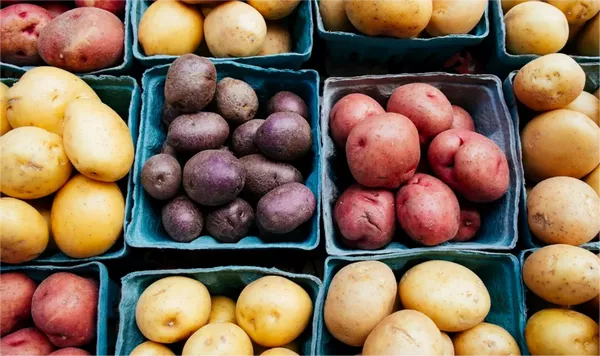Potatoes have long been a staple in diets around the world, cherished for their versatility, affordability, and delicious taste. However, for individuals managing diabetes, navigating the world of potatoes can feel like a daunting task. With concerns about carbohydrate content and glycemic impact, many wonder if potatoes have a place in a diabetic-friendly diet.
In this comprehensive guide, we’ll explore the different types of potatoes and uncover the best options for individuals with diabetes. From understanding glycemic index to considering preparation methods, let’s delve into the world of spuds and make informed choices for optimal health.
Understanding the Glycemic Index:
The glycemic index (GI) is a measure of how quickly carbohydrates in a food raise blood sugar levels. Foods with a high GI are digested and absorbed rapidly, leading to spikes in blood sugar, while those with a low GI are digested more slowly, resulting in more stable blood sugar levels. When it comes to potatoes, the GI can vary depending on factors such as variety, cooking method, and preparation.
Exploring Different Types of Potatoes:
Not all potatoes are created equal when it comes to their impact on blood sugar levels. While some varieties have a higher GI and may cause more significant spikes in blood sugar, others have a lower GI and may be better tolerated by individuals with diabetes. Let’s take a closer look at some of the most common types of potatoes and their glycemic impact:
1. Russet Potatoes:
Russet potatoes, also known as Idaho or baking potatoes, are high in starch and have a relatively high GI. When cooked and eaten without the skin, russet potatoes can cause a rapid rise in blood sugar levels. However, leaving the skin on and opting for smaller portions may help mitigate their glycemic impact.
2. Sweet Potatoes:
Sweet potatoes are a popular choice for individuals with diabetes due to their lower GI and higher fiber content. Unlike white potatoes, sweet potatoes are digested more slowly, leading to a gradual increase in blood sugar levels. They also provide important nutrients such as vitamin A, vitamin C, and potassium, making them a nutritious option for diabetes management.
3. Red Potatoes:
Red potatoes are another low-GI option for individuals with diabetes. With their thin skin and creamy texture, red potatoes are less starchy than russet potatoes and have a lower impact on blood sugar levels. They’re also rich in antioxidants and provide a good source of vitamin C and potassium.
Yukon Gold Potatoes: Yukon Gold potatoes are a versatile variety known for their buttery texture and rich flavor. While they have a slightly higher GI than sweet potatoes and red potatoes, they still offer a moderate glycemic impact when consumed in moderation. Their creamy flesh and thin skin make them a delicious choice for roasting, mashing, or baking.
Choosing the Best Preparation Methods:
In addition to selecting the right type of potatoes, choosing the best preparation methods can further optimize their glycemic impact. Here are some tips for preparing potatoes in a diabetic-friendly way:
Opt for Baking or Boiling: Baking or boiling potatoes with the skin intact can help minimize their impact on blood sugar levels. Steer clear of frying or deep-frying, as these methods can increase the glycemic index of potatoes.
Pair with Protein and Fiber: Pairing potatoes with protein and fiber-rich foods can help slow down the absorption of carbohydrates and prevent spikes in blood sugar. Try topping baked potatoes with lean protein sources like grilled chicken or tofu, and add a side of non-starchy vegetables for added fiber and nutrients.
Watch Portion Sizes: Pay attention to portion sizes when incorporating potatoes into your meals. While potatoes can be part of a balanced diet for individuals with diabetes, it’s essential to enjoy them in moderation and be mindful of overall carbohydrate intake.
Experiment with Cooking Techniques: Experiment with different cooking techniques to find what works best for you. Roasting, steaming, and microwaving are all viable options that can help preserve the nutritional integrity of potatoes while minimizing their impact on blood sugar levels.
Conclusion:
In conclusion, potatoes can be part of a balanced diet for individuals with diabetes when chosen and prepared thoughtfully. While certain varieties like russet potatoes may have a higher glycemic index and should be enjoyed in moderation, others like sweet potatoes, red potatoes, and Yukon Gold potatoes offer lower glycemic options that can be enjoyed more freely. By understanding the glycemic index of different types of potatoes, choosing the best preparation methods, and watching portion sizes, individuals with diabetes can incorporate potatoes into their meals while supporting optimal blood sugar management. So go ahead, embrace the versatility of potatoes, and savor their deliciousness as part of a nutritious and balanced diet for diabetes management.

























